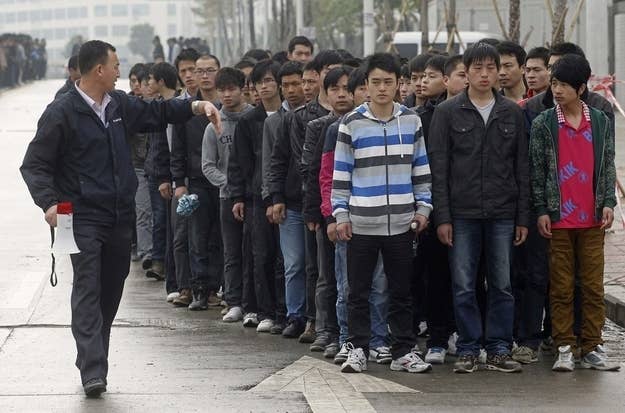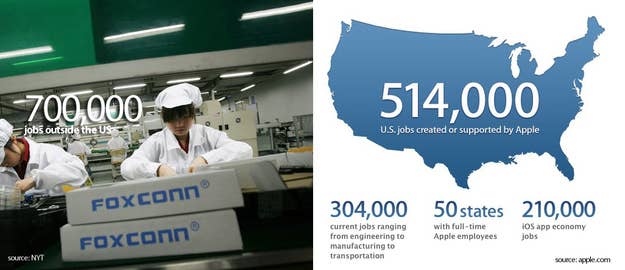
How can you calculate how many American jobs a company has created? If you’re Apple, the answer is by counting everyone from Genius bar employees and UPS drivers to workers making iPad glass at Corning factories in Kentucky — which gets them to the nice-sounding number of 514,000 U.S. jobs “created or supported by Apple.”
But look a little closer, and the numbers don’t quite add up. For one thing, there’s a lot of debate about what exactly “created or supported by” means. MIT economics professor David Autor told the New York Times that the “entire business of claiming ‘direct and indirect’ job creation is disreputable” — there’s no telling whether that UPS driver would’ve been employed anyway, or if that factory worker would’ve been making glass for something else if the iPad didn’t exist.
What the numbers do show, however, is the ways in which the Apple economy highlights broader shifts that have been occurring in the American economy overall in the last 20 years — the widening gap between people in high-paying, high-skilled jobs and lower-wage, lower-skilled jobs, with fewer and fewer people in the middle. We can assume that most of the job growth connected to the so-called “App Economy” — which, according to Apple, “has added more than 210,000 iOS jobs to the U.S. economy since the introduction of iPhone in 2007” — has been for jobs that require specialized skills in programming, software development and the like. These are skills that one is expected to have going into the job. Manufacturers have, over the last 20 years, eliminated the expectation of on-the-job training — at one time, the cornerstone of American skilled manufacturing. They’d rather hire people who come with the skills they already need. (This Atlantic article about the Standard Motor Products factory in Greenville, South Carolina, is a heartbreaking example -- a man who had the good fortune of starting to work there 20 years ago is now employed in a higher-paying, higher-skilled job involving lasers, while a woman who just started there recently has no hope of moving beyond a rote assembly line job — and she doesn’t have the time or money to go back to school.)

Even a job at the Genius Bar — which is, at its core, a customer service job — requires a level of technical know-how that employees are expected to have going into the job. In a section called “A candidate we’ll love,” a current job listing for a Genius includes “your friends and family see you as an absolute technical guru,” “you have some background in tech support or customer service” and “you can communicate technical problems in laymen’s terms.” A job at the Genius Bar, the job listing concludes, is a chance “to use your knowledge and experience. To contribute meaningfully to people’s lives with your technical know-how.”
It’s not just the American economy, either: Apple needed industrial 8,700 industrial engineers to supervise the 200,000 assembly-line workers recruited to put together millions of iPhones. It would’ve taken nine months to hire that many in the U.S., but took just 15 days in China. (And at a much lower cost.) Which leads to the other unspoken motivation for the Apple jobs report: The recent revelations about the oppressive working conditions at Apple supplier Foxconn’s factories in Shenzhen, China; the front-page New York Times report was a huge black eye for secretive, image-obsessed Apple. The article estimates that Foxconn’s total Apple-related employment is around 700,000, in a total Foxconn workforce of 1 million -- numbers that dwarf even Apple’s own estimates of its “created or supported” job creation. It’s a labor force that Apple has rendered all but invisible in this report.
But the irony is that in Steve Jobs’ vision of the perfect factory, humans wouldn’t even have factory jobs at all. In 1990, his neXt computers were made in the U.S. — but by robots. “I’m as proud of the factory as I am of the computer,” Jobs said at the time. After all, robots never commit suicide. They don’t even need bathroom breaks. But it might be a little weird to meet them at the Genius Bar.
